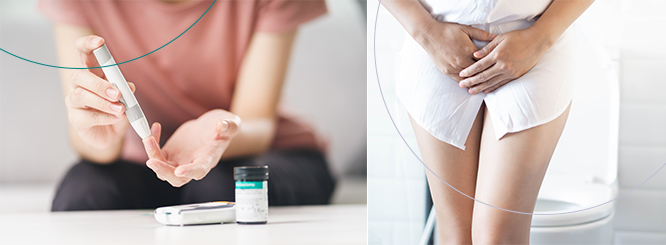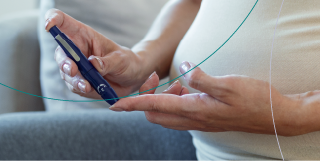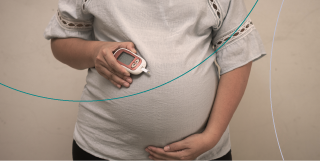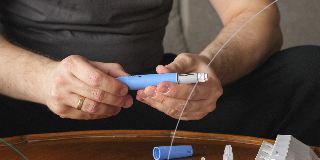
Health should always be a top priority, from the access people have to proper care and information to the steps one must take in order to lead a healthy lifestyle. There are several factors that can improve or worsen a person’s health; some of them can be managed or course corrected by making significant changes to their diet, while others can be treated with controlled or prescribed medication. Whichever the case may be, it’s always important to be mindful of how well we take care of our bodies and mind.
However, we also understand that lifestyle changes may not be enough and that without proper health care, a condition can worsen and even give way to the development of others. This is most commonly seen with people who are struggling with obesity, as they tend to be more at risk of comorbidities, such as diabetes, sleep apnea, heart diseases, and osteoarthritis.
Obesity affects everyone around the world with data suggesting that “the number of obese people in the world has tripled since 1975 to roughly 30% of the total population”[1], and this number continues to rise.
Just as there are many causes for obesity, there are also many consequences that may arise if a person is battling with extra weight. This disorder is one of the leading causes of death because it dramatically decreases a person’s life expectancy.
Patients from all different backgrounds arrive at LIMARP® because they’re looking to improve their quality of life and embark on a healthier path. Our multidisciplinary team, led by Dr. Liza María Pompa González, offers different health services to help you reach your weight goals and beat obesity: from diet and exercise plans, to psychological guidance and surgical intervention.
For this article, we will talk about diabetes and incontinence, the link that exists between these conditions, and the available treatments.
The information we’ll present is general and illustrative, so it may not apply to every specific case; if you have diabetes, incontinence, or both, be sure to talk with your doctor before embarking on a new treatment or leaving an old one behind.
What is diabetes?
Also known as diabetes mellitus, this condition is known as a metabolic disorder that is characterized by high blood sugar (hyperglycemia) over a long period of time[2]. Diabetes presents itself when the pancreas is not producing enough insulin or when the body isn’t absorbing or properly responding to the amount of insulin that’s being produced. Insulin is the hormone responsible for helping glucose from food get into cells to be used for energy[3].
There are three different types of diabetes and each have different characteristics, as well as distinct causes:
- Type 1 diabetes: This type of diabetes results from failure of the pancreas to produce enough insulin due to loss of beta cells, which in turn is caused by an autoimmune response[4]. This type of diabetes is most common in children and young adults, but it can also develop during adulthood.
- Type 2 diabetes: The main cause for this type of diabetes is insulin resistance and although it’s more common in adults, the rise of obesity among children has also resulted in young people developing type 2 diabetes.
- Gestational diabetes: It occurs when pregnant women develop high blood sugar levels, and although their levels lower once they’ve given birth, they’re still at risk of developing type 2 diabetes in later years[5].
Some of the symptoms a person with diabetes may experience are increased thirst and appetite, as well as frequent urination. These symptoms can be considered mild, but if it goes untreated, diabetes can cause serious health problems, such as ketoacidosis, hyperosmolar hyperglycemic state, and complications like cardiovascular disease, stroke, chronic kidney disease, foot ulcers, damage to the nerves, damage to the eyes, and cognitive impairment.
Another link that’s being explored, including by us in this article, is the one that exists between diabetes and incontinence. But before we dive in, let’s talk about incontinence. Urinary incontinence happens when a person leaks urine by accident. Also known as overactive bladder, it is more common in older people, especially women[6]. There are many reasons why a person can develop incontinence, for example: including urinary tract infections (UTI), vaginal infection or irritation, or constipation. Other reasons for long-lasting incontinence include:
- Weak pelvic floor muscles
- Overactive bladder muscles
- Arthritis
- Pelvic organ prolapse
- Multiple sclerosis, diabetes, or Parkinson’s disease
As you can see, diabetes can cause incontinence and this is due to the damage done to the nerves that control the bladder. So, now that we have learned the basics about incontinence, let’s move on to how this condition is related to diabetes, how to prevent it, and the available treatments.
The link between diabetes and incontinence
While having diabetes or incontinence doesn’t guarantee you’ll develop the other, there is a chance that if you’re struggling with diabetes, you’re more at risk of developing incontinence.
A study[7] found that 39% of the women with diabetes they tested have incontinence, while another journal[8] published that incontinence may worsen if the patient also has type 2 diabetes.
There is no clear explanation for the appearance of incontinence once you’ve developed any type of diabetes, but there are different ways it can contribute. The first is that obesity, which can lead to type 2 diabetes, puts pressure on the bladder due to the excess body fat; another one, which have previously mentioned, is the damage done to the nerves that control the bladder; a compromised immune system can also increase the risk for urinary tract infections; lastly, some diabetes medication can cause diarrhea or involuntary leakage.
Other reasons why having diabetes can increase the risk of developing incontinence is due to the fact that high blood sugar levels seen with diabetes can cause you to become thirstier and urinate more. It’s also important to point out that women with diabetes are more at risk than men of having urinary incontinence because factors like childbirth and UTIs are more common amongst women.
It’s also possible for people to experience nocturia, the need to urinate more than once during the night, which can be a sign of uncontrolled blood sugar levels or a urinary tract infection[9]. Another study pointed out that if a person is diabetic and also has a high BMI, they’re at more risk of a higher intrapelvic pressure, which can lead to urinary incontinence[10]. The pressure that the extra weight has on the lower abdomen can lead to a type of urinary incontinence known as stress incontinence, which is characterized by bladder leakage when a person coughs, laughs, sneezes, or is physically active.
The nerve damage that diabetes causes on the bladder is known as neuropathy and it can also cause a neurogenic or diabetic bladder, which is partial or full loss of bladder control. This also impacts the bowels, thus leading to urinary and fecal incontinence.
Available treatments
The treatment, of course, depends on the case of each patient and their symptoms. Be sure to contact your doctor if your current treatment, either for diabetes or incontinence, is worsening your symptoms. They can recommend different medications or antibiotics if you have a UTI; they may also suggest lifestyle changes, such as modifying your diet by adding more fiber-heavy foods to help with regulating bowel movements and reducing constipation.
Keeping your blood sugar levels regulated can prevent more nerve damage to the bladder or reduce the risk of developing incontinence in the first place. Your doctor may also suggest weight loss if the reason for your incontinence is a high abdominal BMI or obesity; the loss of weight not only will improve the symptoms of incontinence, but allow you to live a healthier lifestyle, not only because it will lower your risk of developing other conditions that come with obesity or being overweight, but because it can also help lower any complications related to diabetes.
Contact Us to Learn More
If you want to learn more about diabetes and incontinence, schedule an appointment with one of our doctors. We can help determine the right treatment for you. Contact us online anytime or give us a call at (619) 373-0229.
References
- [1] “Most Obese Countries 2022”. https://worldpopulationreview.com/country-rankings/most-obese-countries. (Accessed September 28, 2022).
- [2] “About diabetes”. https://web.archive.org/web/20140331094533/http://www.who.int/diabetes/action_online/basics/en/. (Accessed September 28, 2022).
- [3] “What is diabetes?”. https://www.niddk.nih.gov/health-information/diabetes/overview/what-is-diabetes. (Accessed September 28, 2022).
- [4] “Type 1 diabetes”. https://www.mayoclinic.org/diseases-conditions/type-1-diabetes/symptoms-causes/syc-20353011. (Accessed September 28, 2022).
- [5] “Gestational diabetes”. https://www.mayoclinic.org/diseases-conditions/gestational-diabetes/symptoms-causes/syc-20355339. (Accessed September 28, 2022).
- [6] “Urinary Incontinence in Older Adults”. https://www.nia.nih.gov/health/urinary-incontinence-older-adults. (Accessed September 28, 2022).
- [7] Ebbesen MH, Hannestad YS, Midthjell K, Hunskaar S. Diabetes and urinary incontinence − prevalence data from Norway. Acta Obstet Gynecol Scand. 2007 Oct;86(10):1256-62. doi: 10.1080/00016340701625347. PMID: 17851814.
- [8] “Type 2 Diabetes Mellitus and Risk of Stress, Urge and Mixed Urinary Incontinence”. https://www.auajournals.org/doi/full/10.1016/j.juro.2008.09.007. (Accessed September 28, 2022).
- [9] “Diabetes And Incontinence”. https://www.bladderandbowel.org/associated-illness/diabetes-incontinence/#:~:text=Can%20Diabetes%20Cause%20Incontinence%3F,are%20not%20bought%20under%20control. (Accessed September 28, 2022).
- [10] Izci Y, Topsever P, Filiz TM, Cinar ND, Uludağ C, Lagro-Janssen T. The association between diabetes mellitus and urinary incontinence in adult women. Int Urogynecol J Pelvic Floor Dysfunct. 2009 Aug;20(8):947-52. doi: 10.1007/s00192-009-0888-8. Epub 2009 Apr 30. PMID: 19404561; PMCID: PMC2706373.


